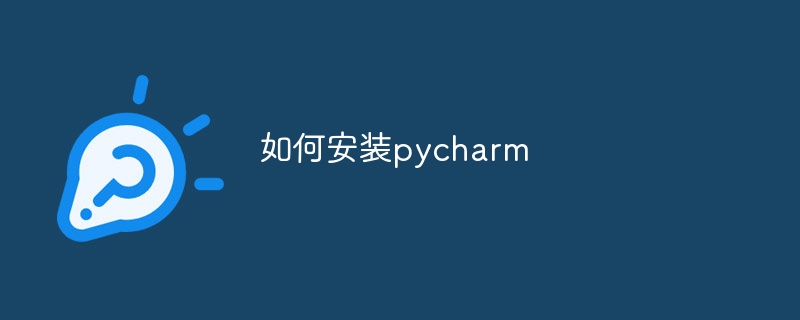Home >Backend Development >Python Tutorial >How to install pycharm
How to install pycharm
- 百草Original
- 2023-12-13 16:44:372026browse
Steps to install pycharm: 1. Visit the PyCharm official website to download the latest version of PyCharm; 2. After the download is completed, open the installation file; 3. After the installation is completed, open PyCharm; 4. In the main interface of PyCharm , you can view different areas such as the menu bar, toolbar, project browser, editor, console, etc.; 5. When writing code in PyCharm, you can use functions such as code auto-completion, syntax highlighting, and code formatting to improve coding efficiency. etc.

The operating system for this tutorial: Windows 10 system, Python version 3.11.4, DELL G3 computer.
PyCharm is a Python IDE (Integrated Development Environment, integrated development environment) with a set of tools that can help users improve their efficiency when developing in the Python language, such as debugging, syntax highlighting, project management, Code jump, smart prompts, auto-completion, unit testing, version control. In addition, the IDE provides some advanced features to support professional web development under the Django framework. PyCharm is a Python IDE created by JetBrains, and the VS2010 reconstruction plug-in Resharper is from JetBrains. It also supports Google App Engine, and PyCharm supports IronPython. These features, backed by advanced code analysis programs, make PyCharm a powerful tool for both professional Python developers and those just starting out.
The steps to install PyCharm are as follows:
1. Visit the PyCharm official website to download the latest version of PyCharm. Choose the version that suits your operating system, such as Windows, Mac or Linux.
2. After the download is completed, open the installation file. During the installation process, you can select custom installation options to choose where to install PyCharm, create a desktop shortcut, etc.
3. After the installation is complete, open PyCharm. When starting up for the first time, you can choose to create a new project or open an existing project.
4. In the main interface of PyCharm, you can view different areas such as the menu bar, toolbar, project browser, editor, and console. Through the options in the menu bar, you can create new files, run code, view the project structure, etc.
5. When writing code in PyCharm, you can use functions such as code auto-completion, syntax highlighting, and code formatting to improve coding efficiency.
6. PyCharm also provides a wealth of debugging tools, such as breakpoints, variable viewing, console output, etc., to help developers quickly locate and solve problems.
7. PyCharm also supports a variety of version control tools, such as Git, SVN, etc., to facilitate team collaboration and version management for developers.
8. Through PyCharm's plug-in market, you can download and install various plug-ins to expand the functions of PyCharm.
In short, PyCharm is a powerful and easy-to-use Python integrated development environment. Through the above steps, you can successfully install and use PyCharm for Python development work.
The above is the detailed content of How to install pycharm. For more information, please follow other related articles on the PHP Chinese website!

